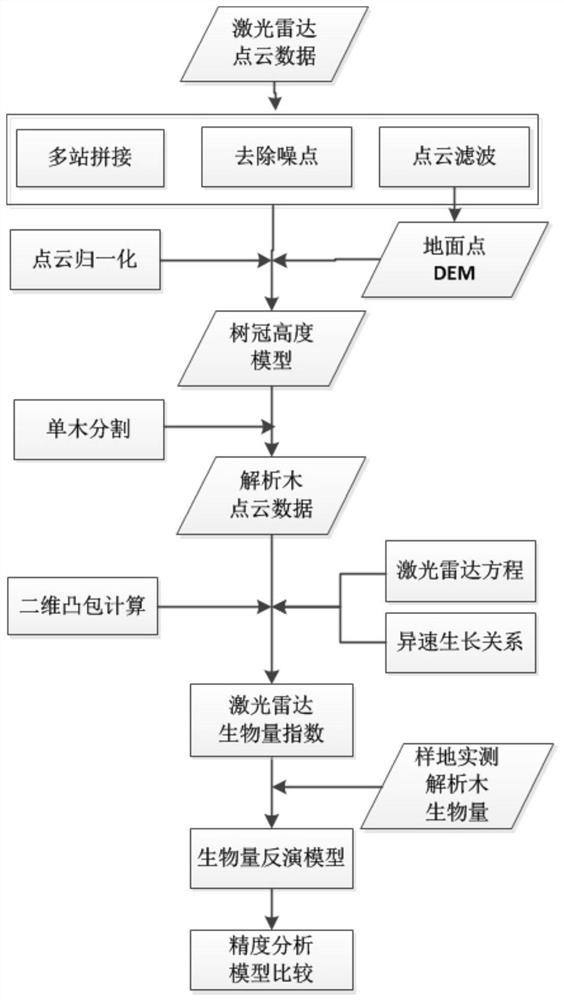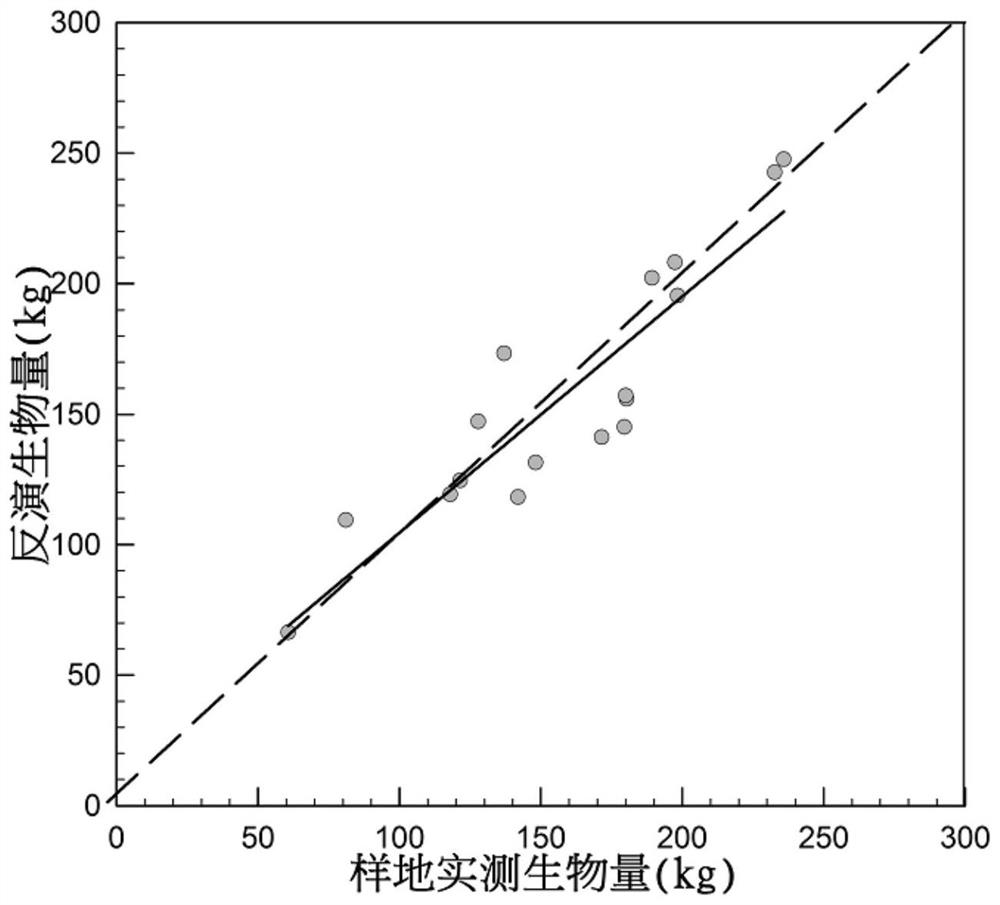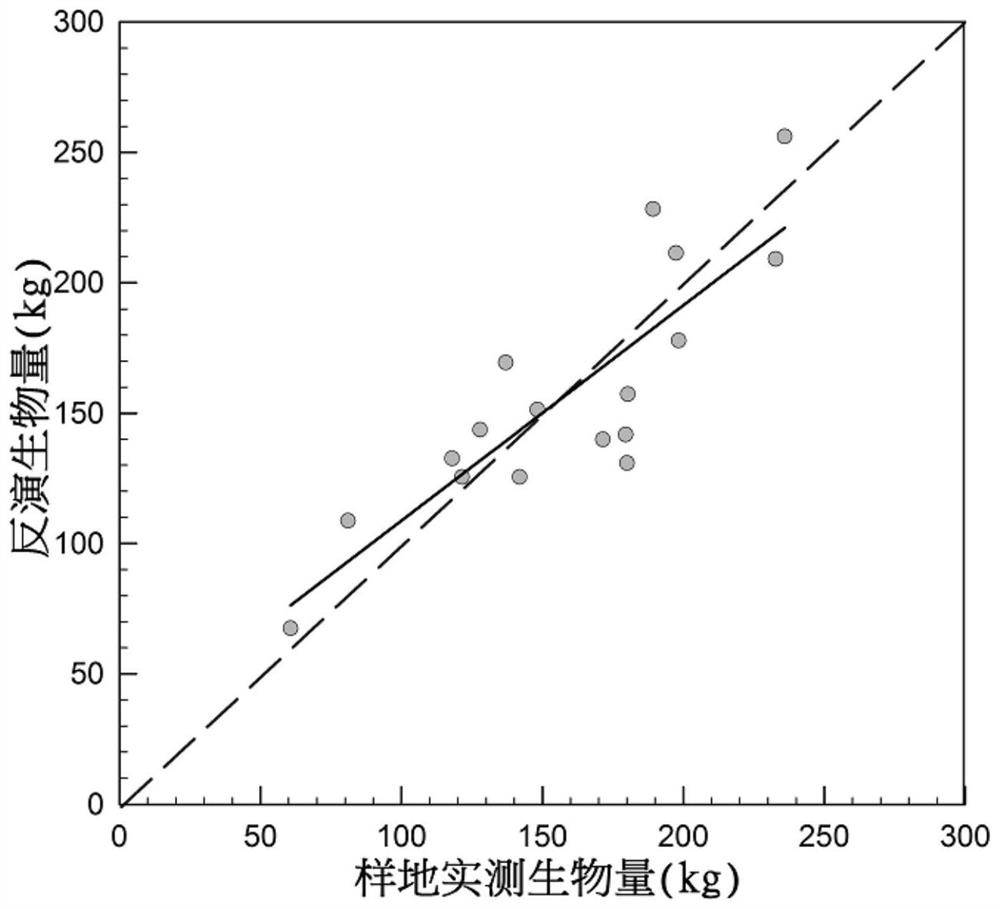Biomass extraction method based on different-speed growth relation combined with laser radar equation
A laser radar and allometric growth technology, which is applied in measurement devices, re-radiation of electromagnetic waves, radio wave measurement systems, etc., can solve the problems of low accuracy and poor applicability, and achieve the effect of improving inversion accuracy.
- Summary
- Abstract
- Description
- Claims
- Application Information
AI Technical Summary
Problems solved by technology
Method used
Image
Examples
specific Embodiment approach 1
[0024] Specific implementation mode one: combine figure 1 Specifically, the present embodiment is a biomass extraction method based on the allometric growth relationship and the lidar equation, which is carried out in the following steps:
[0025] 1. Establish a forest biomass inversion model based on the allometric growth relationship combined with the lidar equation:
[0026]
[0027] Biomass is forest biomass; H T is the height of the tree, in m; H c is the crown height, the unit is m; ρ is the density of wood, the unit is g / cm 3 ; γ is the Nelson parameter; G is the spatial orientation distribution function of vegetation components; U L (H) is the volume density distribution function of the leaf area of a single tree, and the unit is m 2 / m 3 ; At the height H, the vegetation canopy radius is r(H), and the unit is m; α is obtained from the regression of the canopy volume measured in the plot and the diameter at breast height; β is the power function relationship ...
specific Embodiment approach 2
[0043] Specific embodiment two: the difference between this embodiment and specific embodiment one is: the forest biomass inversion model of setting up the allometric growth relationship joint laser radar equation in step 1 is specifically carried out according to the following steps:
[0044] The formula (3) is obtained by combining the biomass formula (1) with the relationship formula (2) between the diameter at breast height and the crown volume:
[0045]
[0046] Biomass is forest biomass; H T is the height of the tree, in m; H c is the crown height, the unit is m; ρ is the density of wood, the unit is g / cm 3 ;F app-single-tree (H) is the density distribution function of vegetation canopy components at height H; is the volume of the crown, in m 3 ; α is obtained from the fitting regression of crown volume and diameter at breast height measured in the plot; β is the power function relationship between forest biomass, diameter at breast height and tree height;
[0047...
specific Embodiment approach 3
[0066] Specific embodiment three: the difference between this embodiment and specific embodiment one or two is: described biomass formula (1):
[0067]
[0068] Among them, Biomass is forest biomass; H T is the tree height, the unit is m; DBH is the diameter at breast height, the unit is m; ρ is the density of wood, the unit is g / cm 3 ; β is the power function relationship between forest biomass, DBH and tree height. Others are the same as in the first or second embodiment.
PUM
 Login to View More
Login to View More Abstract
Description
Claims
Application Information
 Login to View More
Login to View More - R&D
- Intellectual Property
- Life Sciences
- Materials
- Tech Scout
- Unparalleled Data Quality
- Higher Quality Content
- 60% Fewer Hallucinations
Browse by: Latest US Patents, China's latest patents, Technical Efficacy Thesaurus, Application Domain, Technology Topic, Popular Technical Reports.
© 2025 PatSnap. All rights reserved.Legal|Privacy policy|Modern Slavery Act Transparency Statement|Sitemap|About US| Contact US: help@patsnap.com



